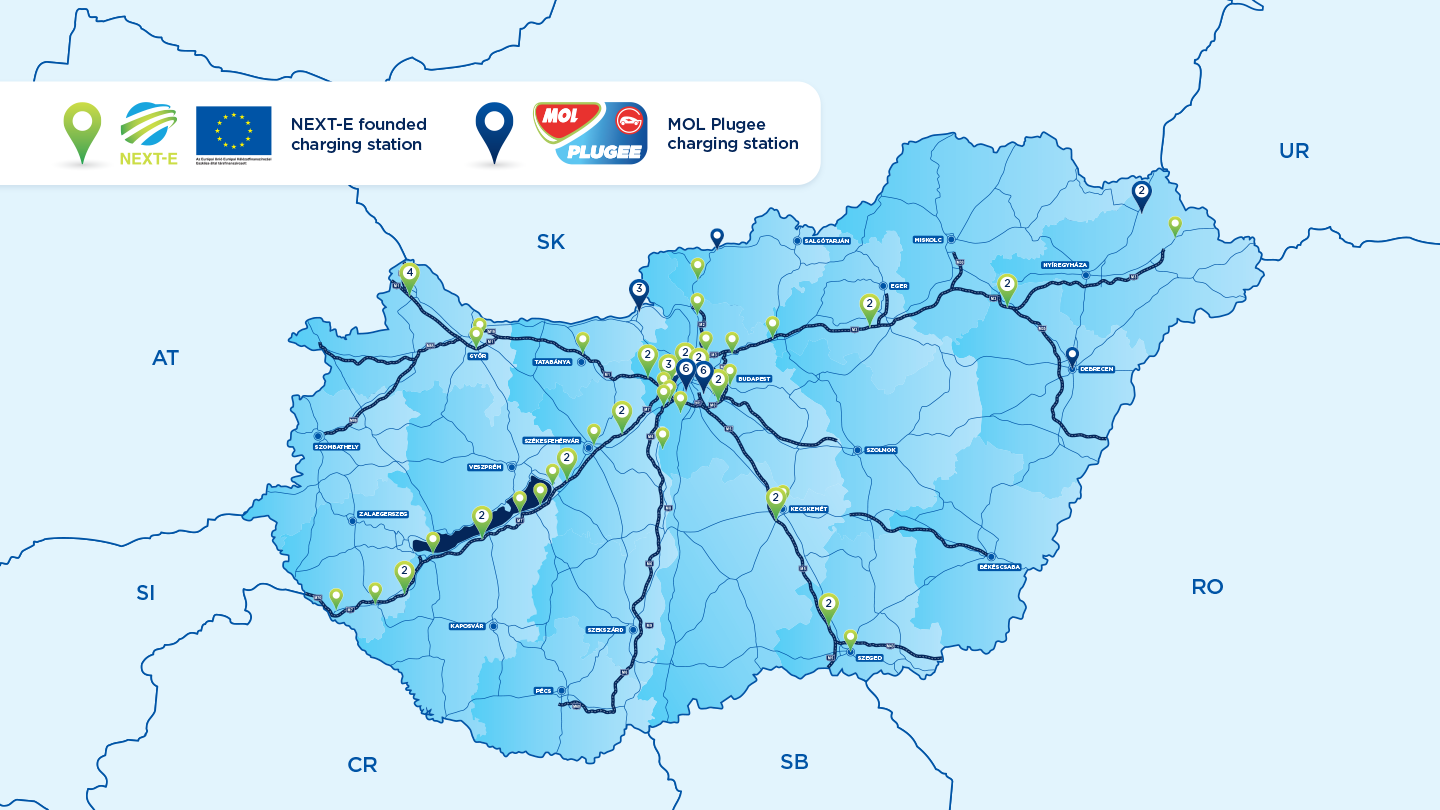Head of Mobility at MOL: 5 users per day on average for each electric charger
EnglishToday, there are still proportionally fewer people using electric chargers than would be needed to cover investment costs. Nevertheless, MOL will continue to install electric charging stations from its own resources and even as a business service for third parties, Tamás Czikora, Head of Mobility at MOL told növekedés.hu after the company handed over the last domestic charging station of the electric charger network partly funded by the EU.
Are you going to continue installing new charging stations after the end of the NEXT-E project?
Mol's involvement in the NEXT-E project has ended, but new programs are expected to start to promote the improvement of the charging infrastructure. These are planned to provide support for the installation of high performance chargers with a lower rate of funding intensity, and of course we are already examining on what conditions we could participate in them.
Last year, traditional car sales fell by nearly 6% globally, while electric car sales rose by 41%.
In Hungary, compared to the 5,000 electric vehicles in use three years ago, there are already 37,000 cars running on the roads with green number plates.
Electricity is taking a growing share of alternative fuels. It is stated in Mol Group’s strategy that we do not want to sell litres of fuel but kilometres. For this number to grow, a strong charging infrastructure is needed.
In fact, ideally, supply should be slightly ahead of demand, i.e. the network should be ahead in development – although today the situation in Hungary is more of equilibrium.
Are you planning to install chargers exclusively from your own resources?
Yes. There are several areas in the country where coverage should be improved - for example in Dunántúl. That is why today, when we build a new filling station such as recently at Kövegy on motorway M43, we always install an electric charger as well to meet future needs.
Are you also considering other types of collaboration in this field?
Today, we have come to the point where we have enough experience to be able to provide business services to third parties.
This can mean cooperating with hotels or shopping malls, for example, or even remodelling existing chargers.
Installing electric charging stations is still not profitable although their return on investment is improving.
Funding will continue to be much needed in the future. What influences the return most is the use of the technology, and today, relatively fewer people are using it than would be needed to make it pay off. But we expect the average daily use/users to increase. The biggest part of the installation costs is fixed, and there are system usage fees – substantial capacity fees have to be paid for the power – and then there is the cost of the electricity used for charging.
How many people use MOL's electric chargers per day?
The number varies greatly depending on the location and the period we are looking at. For example, the chargers around Lake Balaton were much used in the summer, but apart from that, the chargers in Budapest and Pest County are the busiest.
If we look at the average, we can talk about a few charges per day (approximately 5 per day), but the variance is large.
When we look at the possibilities of expanding the network, we take everything into account. Overall, however, the utilization of chargers is clearly increasing; and this year, for example, has already exceeded our expectations.
Unfortunately, these numbers are still too low to ensure profitability, as investment costs and fixed operating costs are very high,
but with the increase in the number of electric cars the utilization of the chargers is expected to grow significantly in the future.
How popular is shared mobility like Mol Bubi and Limo?
Bicycle or car sharing is a realistic alternative to traditional car use that is sustainable in the long run. It responds primarily to urban congestions and the problem of parking spaces. On the other hand, let’s not forget that most vehicles are underused, so it’s a logical solution to get around in a shared vehicle instead of your own car.

There are indeed many arguments in favour of it, and yet many people are reluctant to use shared vehicles instead of their own.
Many people do switch, though, since the number of our users is constantly growing, and the relevance of this service is also increasing. Mol Bubi is a good example to this: the most successful year of our bicycle share service so far was 2015, with 652,000 trips. This record was exceeded in the first 100 days with the new bicycles this year, and by 19 September, MOL Bubi already completed almost 850,000 trips.
The fact that users are becoming more and more accustomed to the idea of shared transport also plays a role in this. The goal, of course, is for a wider segment of the society (or age group) to use it.
Data on shared services show that there is still plenty of room for growth among the older generations and women.
What is the weight of alternative mobility within the group?
We prefer to look at these services by themselves. Mol Fleet Solution, for example, manages about 5,000 cars, which is considered to be large in the fleet market, but it is small in relation to our overall activity. We also manage the growth of each area separately.
By 2025, we expect to be operating about 500 electric charging stations, while the future weight of shared mobility will depend on changes in consumer demand.
